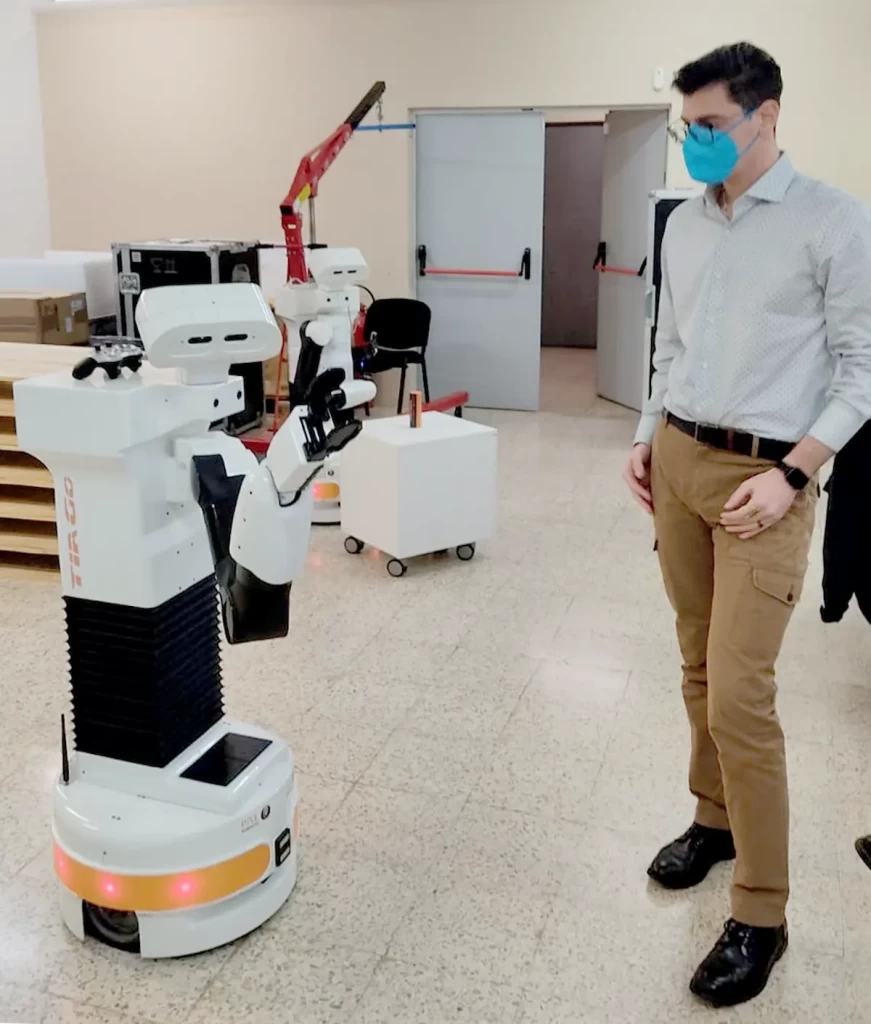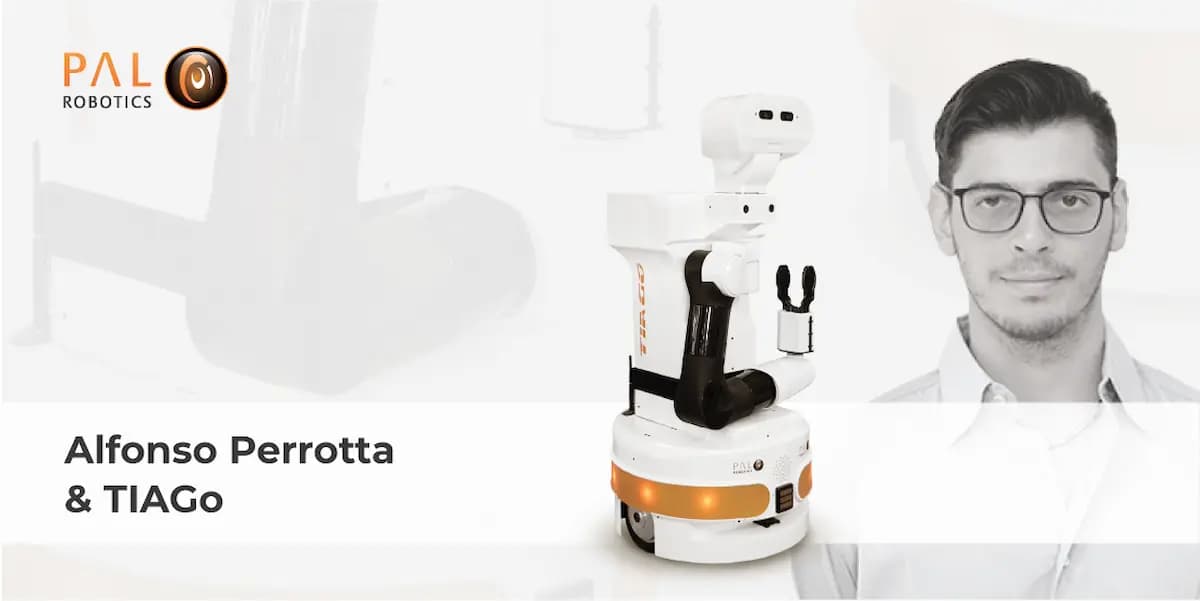Humans and robots working together
With the advance of Human-Robot Interaction in Industry 4.0, the coexistence of robots and humans in the workplace will soon become a reality, making safety issues a primary concern.
Robots should be able to operate in highly dynamic, unstructured, and partially unknown environments, sharing the workspace with human users, avoiding collisions, anticipating any risky situations, and promoting HRI.
Read the interview to Raquel Ros on social robotics.
Recently, Alfonso Maria Perrotta, an intern at PAL Robotics, told us about his research on the collision handling of PAL Robotics’ TIAGo robot, focusing on a method that: “Uses the data from the position and velocity joint sensors, to detect collisions so that the robot stops its motion to restart a safer motion, with the compliance behaviour in order to reach the desired position before the collision.”
The primary motivation for this research is to guarantee safety to the people that share a workspace with TIAGo by avoiding accidental collisions, in order to ensure Human-Robot Interaction (HRI) and securing a safe reaction in case of collision. This is particularly important for industry 4.0, where robots and humans will work increasingly side by side.
The collision handling of TIAGo: Pre-impact phase
Avoiding collisions is the main goal in the pre-impact phase, where it’s important to understand the environment geometry, and the planning techniques and have restrained access to areas where the robot shouldn’t be navigating. Moreover, the use of additional external sensors allows fast detection of human-robot proximity.
Alfonso explained, “Some planned trajectories may be impulsive, with high accelerations, carrying out motions that may be unsafe. If the trajectory is not well planned the robot may recognize impulsive trajectories as a collision and stop them.”
The collision handling of TIAGo: Impact phase
During the impact phase, when the collision is happening, the aim is to reduce any damage – different techniques can help to achieve this goal.
First of all, pursuing a lightweight robot design, together with a mechanical design that reduces the weight of the robot and the manipulator inertia can help to minimize the impact.
Secondly, being aware of the joints that should be stiffened at low velocities and relaxed at high velocities. The implementation of compliance in the driving system is also key in order to reduce damage as much as possible.
The collision handling of TIAGo: Post-impact phase
Once the impact has occurred, it is important to guarantee a safe robot motion with control and planning strategies that enables reducing the effective inertia. The robot retracts itself away from the collision area, using the local directional information collected during the impact. The most basic motion is to stop the robot, however, this may result in inconvenient situations, where the robot is constrained or blocks the human.
Alfonso told us, “This work could be translated to other robots by tune the gains of the generalized momentum observers, the threshold on the norm of estimated external torques for the collision detection, and the restart motion period, to reach the desired behaviour and sensitivity for the collision with a controller. This controller could be improved to implement a virtual force sensor that allows estimation of external forces and the contact point of the collision.”
In addition, “with the actual implementation, for a user, there will be no need to tune seven thresholds and seven gains for the collision handling, but only to tune one threshold and one gain; this will save people from spending too much time for appreciable tuning in the future.”

TIAGo for industry 4.0: the future
Off-line motion planning techniques are expensive, and their efficient conversion to online methods capable of handling instantaneous changes is still ongoing research.
Alfonso concluded, “Using this work as a base, there is the possibility to compute the forces acting on a point to implement a virtual sensor, replacing real sensors (force sensors or tactile sensors) that usually are expensive and fragile. This controller could be improved to implement a virtual force sensor that allows estimation of external forces and the contact point of the collision.”
We would like to thank Alfonso Maria Perrotta for taking the time to talk with us about his research project.
PAL Robotics’ TIAGo robot is configurable based on users’ needs
TIAGo robot combines perception, navigation, manipulation & Human-Robot Interaction skills out of the box. TIAGo’s abilities open many possibilities for future applications in Industry 4.0 and a standard research platform for manipulation, perception, and autonomous navigation.
The robot has a modular design and can be configured based on our customers’ needs. The arm has a large manipulation workspace, being able to reach the ground as well as high shelves. The end effector can be a gripper or a humanoid hand and they can be quickly exchanged for performing various manipulation tasks.
Discover how TIAGo improves its manipulation skills with the new end-effectors.
To learn about the capabilities of our research robot TIAGo, take a look at our blog about PAL Robotics’ work and research. If you would like to ask us more about TIAGo, do not hesitate to get in touch with us.
